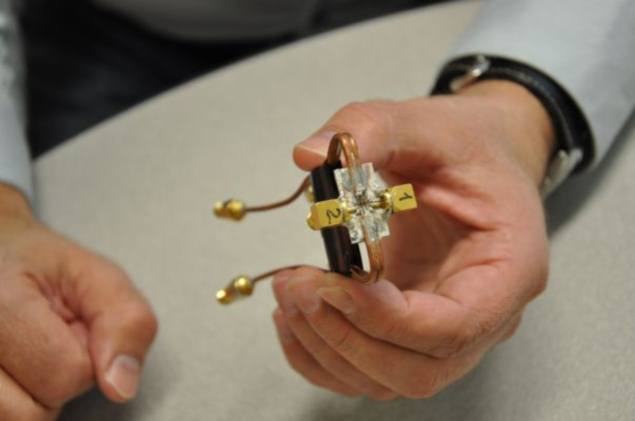A new
holographic memory device can provide unprecedented data storage
capacity and data processing capabilities in electronic devices like
computer, pen drive or cell phone.
This memory device uses 'spin waves' - a collective oscillation of spins in magnetic materials - instead of optical beams.
Spin
waves are advantageous because spin wave devices are compatible with
the conventional electronic devices and may operate at a much shorter
wavelength than optical devices, allowing for smaller electronic devices
that have greater storage capacity.
"The results open a
new field of research which may have tremendous impact on the
development of new logic and memory devices," said Alexander Khitun, lead researcher at
University of California, Riverside.
The study found it
was feasible to apply holographic techniques developed in optics to
magnetic structures to create a magnonic holographic memory device.
Holography
is a technique-based on the wave nature of light which allows the use
of wave interference between the object beam and the coherent
background.
It is commonly associated with images being made from
light, such as on driver's licenses or paper currency. However, this is
only a narrow field of holography.
Khitun and his team conducted
the experiments using a 2-bit magnonic holographic memory prototype
device. A pair of magnets, which represent the memory elements, were
aligned in different positions on the magnetic waveguides.
Spin
waves propagating through the waveguides are affected by the magnetic
field produced by the magnets. When spin waves interference was applied
in the experiments, a clear picture was produced and the researchers
could recognise the magnetic states of the magnets. The findings of the
study are published (advance copy) in
the journal Applied Physics Letters.
There are three
co-authors of the 'Magnonic Holographic Memory' paper: Frederick Gertz, a
graduate student who works with Khitun at UC Riverside, and A.
Kozhevnikov and Y. Filimonov, both of the Russian Academy of Sciences.
 Tired of Zoom Calls? Company Offers At-Home Hologram Machines9 August 2020
Tired of Zoom Calls? Company Offers At-Home Hologram Machines9 August 2020 Apple Buys Startup Akonia Holographics, Focused on Lenses for AR Glasses30 August 2018
Apple Buys Startup Akonia Holographics, Focused on Lenses for AR Glasses30 August 2018 Microsoft to Start Shipping Windows Mixed Reality Development Kits in March2 March 2017
Microsoft to Start Shipping Windows Mixed Reality Development Kits in March2 March 2017 Windows 10 VR Headset Minimum PC Requirements Revealed, and They're Pretty Basic22 November 2016
Windows 10 VR Headset Minimum PC Requirements Revealed, and They're Pretty Basic22 November 2016



![Gadgets 360 With Technical Guruji: News of the Week [April 20, 2025]](https://c.ndtvimg.com/2025-04/if5c1cvo_news-of-the-week_160x120_20_April_25.jpg?downsize=180:*)
![Gadgets 360 With Technical Guruji: Ask TG [April 20, 2025]](https://c.ndtvimg.com/2025-04/561hesm_ask-tg_160x120_20_April_25.jpg?downsize=180:*)










